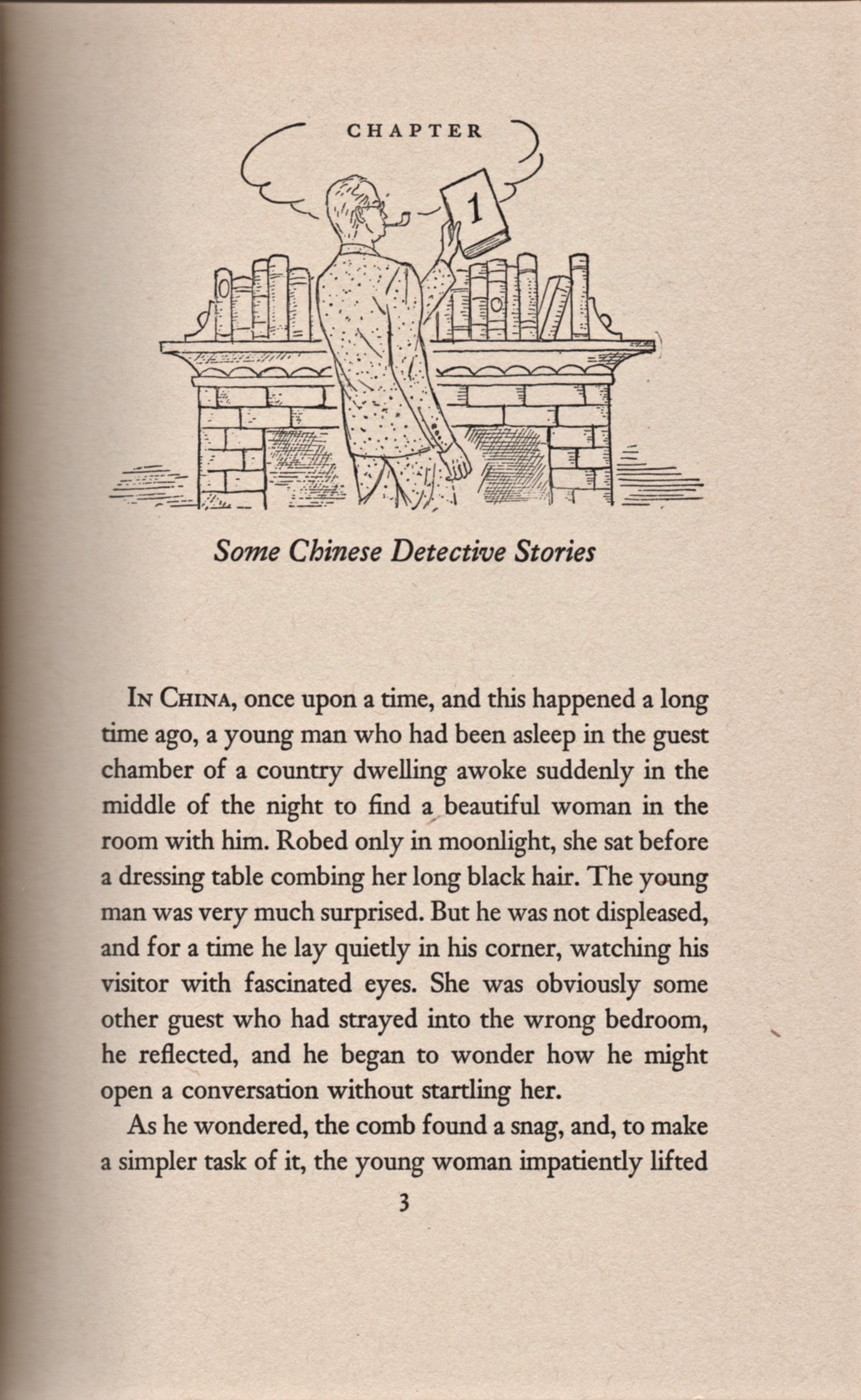Peking pays off: VS in the Forbidden City, Part 2
A novel, two essays in bad taste and memories for a lifetime.
The cover to The Laughing Buddha, one of several products of Starrett's time in Asia in the 1930s.
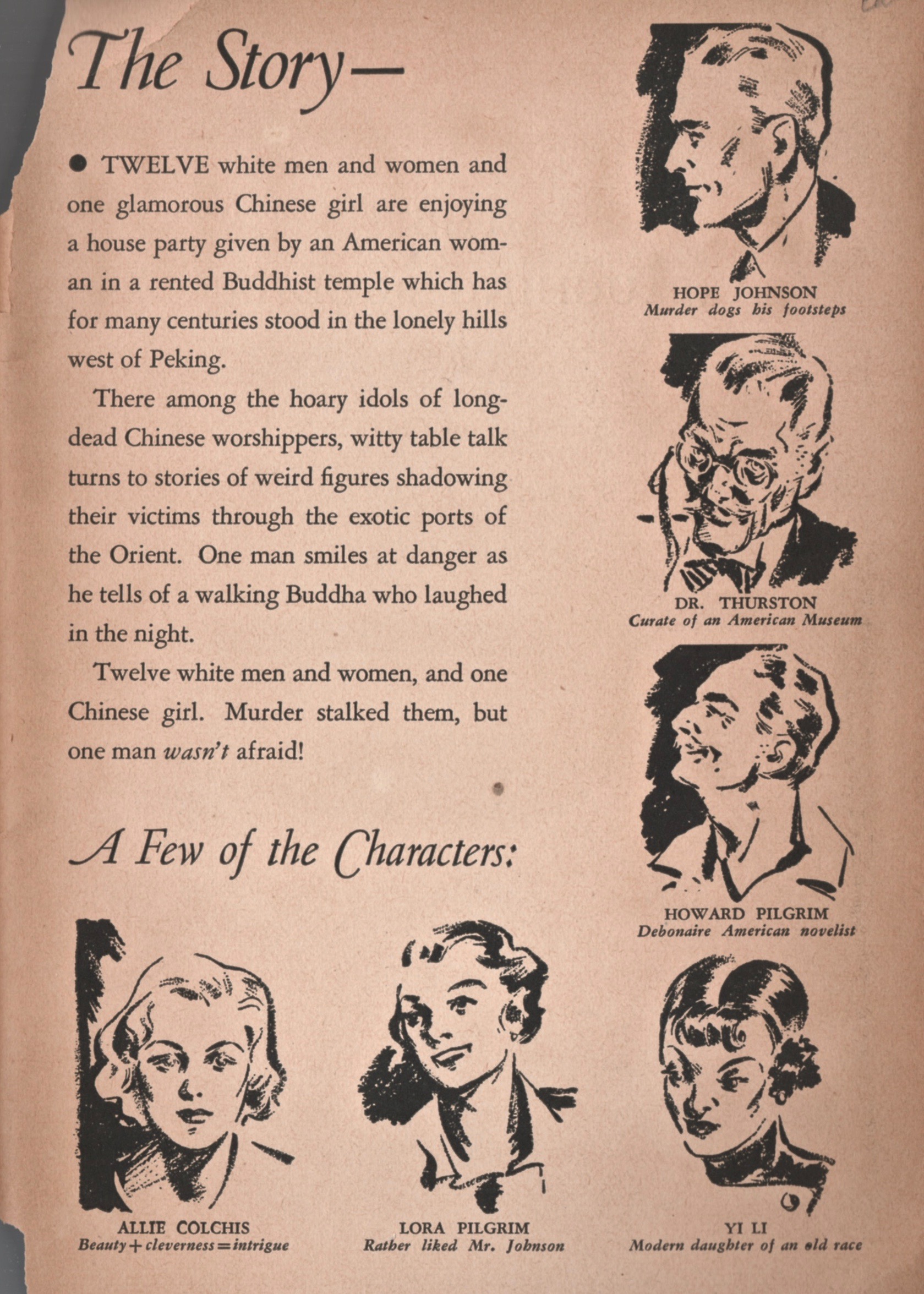
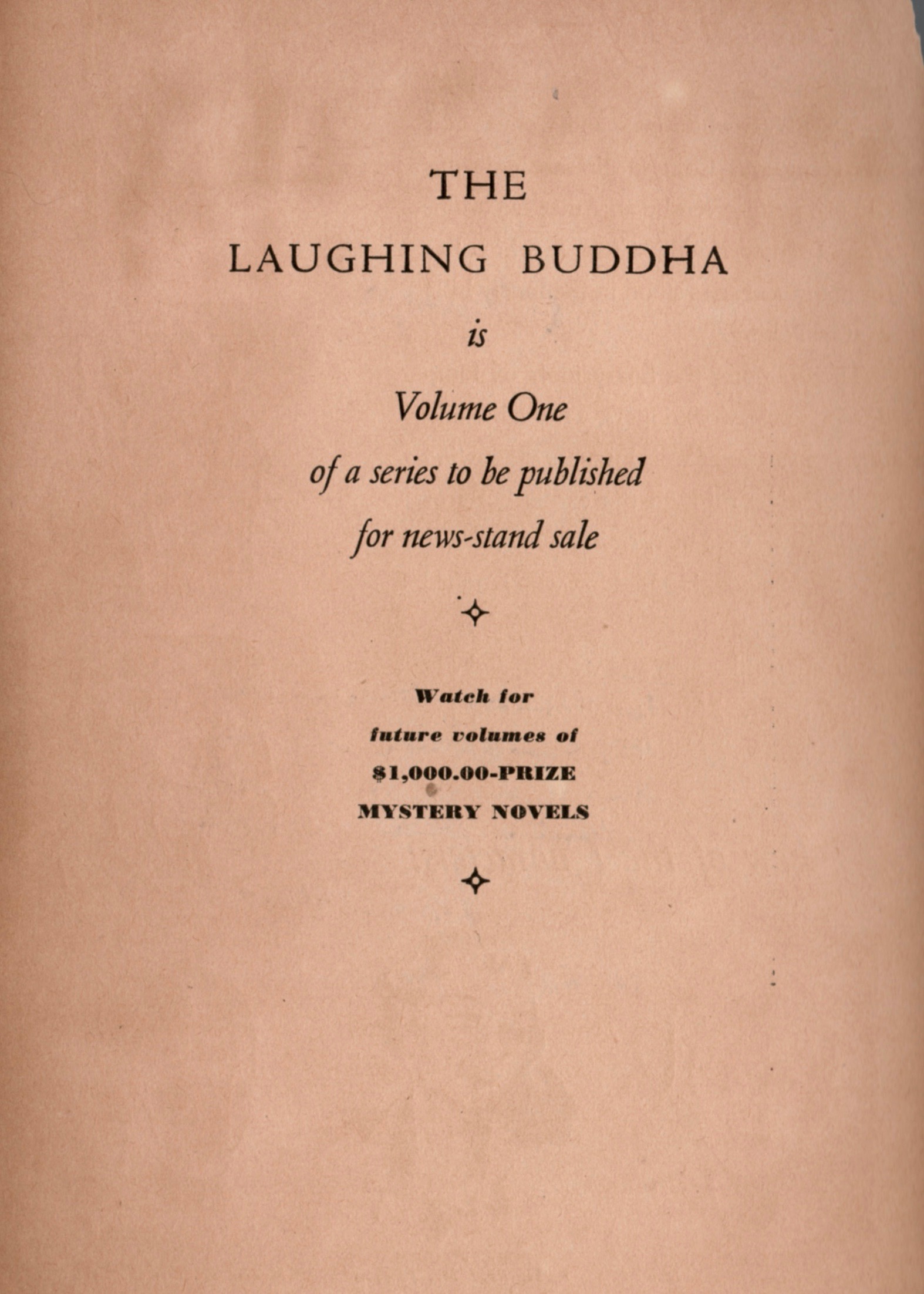
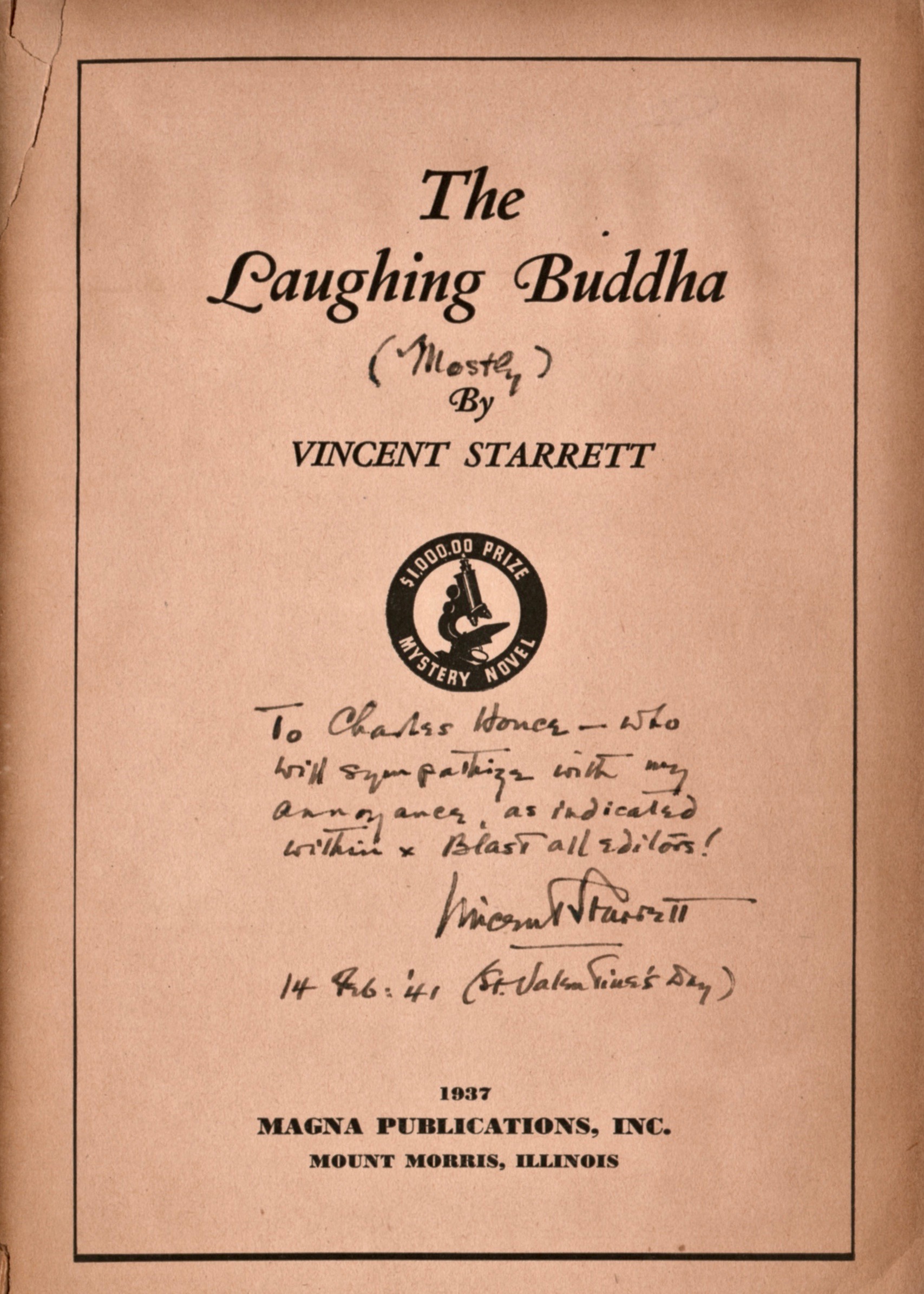
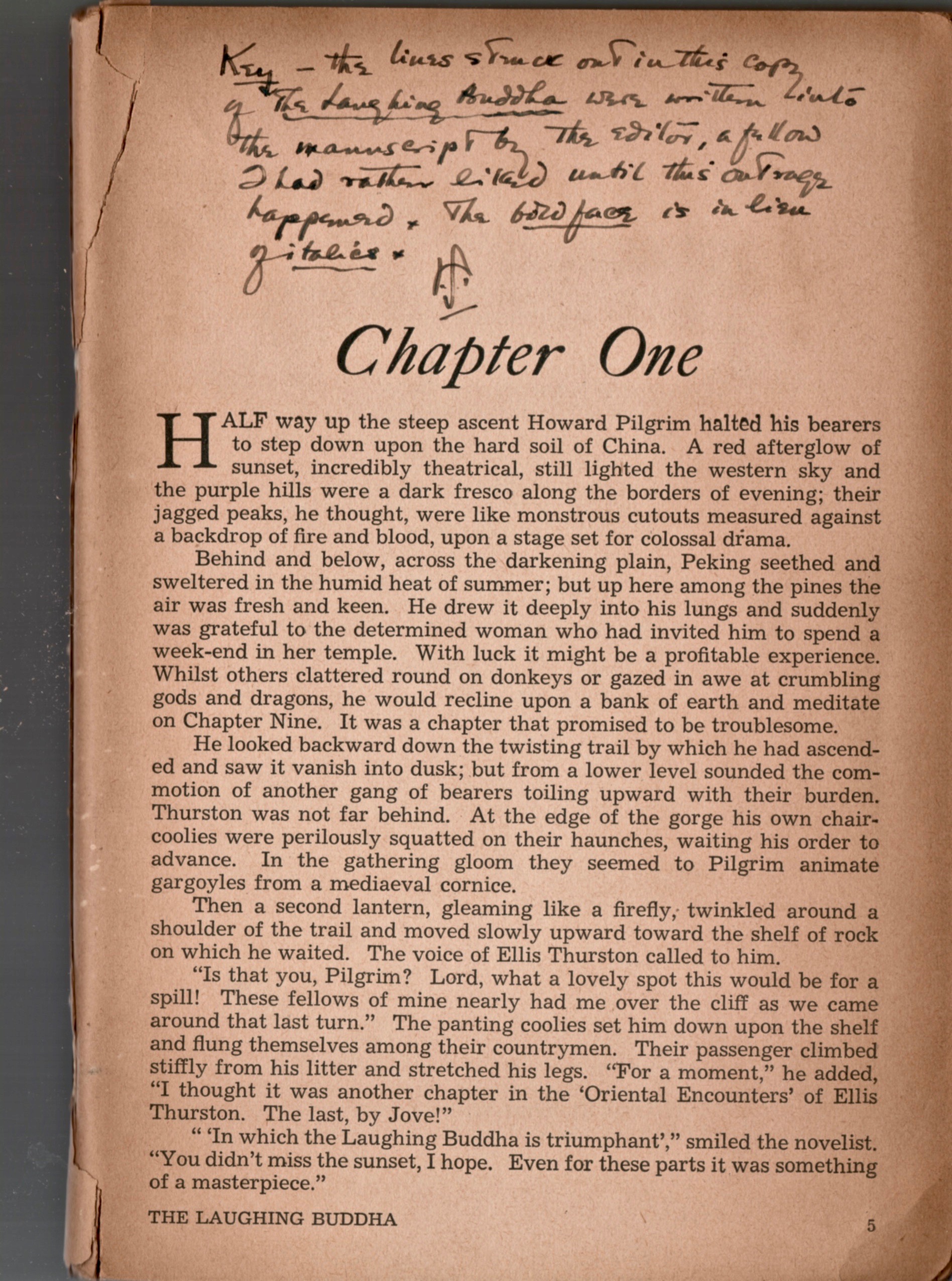
Last time we looked at how Vincent Starrett fell in love with Peking as he and Ray Latimer set up house for a year and half in the ancient city. While it’s true that Starrett did a lot of book collecting while he was in China, the trip also offered inspiration for writing, both during his stay and after he got home.
The first product of the trip was his last novel, published as The Laughing Buddha in a cheap, digest-sized paperback by Magna Publications Inc. of Mount Morris, Illinois in 1937. (That was the year they left China ahead of the invading Japanese troops.)
The story was written in China in 1936, according to Starrett in his memoirs, Born in a Bookshop. “The inspiration was a weekend visit to Helen Burton’s rented Chinese temple in the hills, which is faithfully described in the early chapters of the book. It is a roman á clef with a vengeance. Friends and acquaintances made up the dramatis personae and the fictional murderer was myself. The young woman who was murdered was, of course, an invention.”
The copy that sits before me is brittle and the pages are chipped and separating, even as I gently thumb through it. The reason why I treasure it is this: It has been inscribed and annotated by Starrett himself. As you can see from the accompanying photos, it says :
The Laughing Buddha
(Mostly)
by
Vincent Starrett
To Charles Honce — who
will sympathize with my
annoyance, as indicated
within. Blast all editors!
Vincent Starrett
14 Feb. ’41 (St. Valentine’s Day)
1937
Magna Publications, Inc.
Mount Morris, Illinois
Honce, an Associated Press writer at the time, was also one of Starrett’s disciples. He had asked for Starrett to inscribe a copy, and the author went him one better by going through the copy and making all the edits to show where changes had been made to the original. It’s not a manuscript, but it does show the author’s original intent.
Quite a treasure indeed.
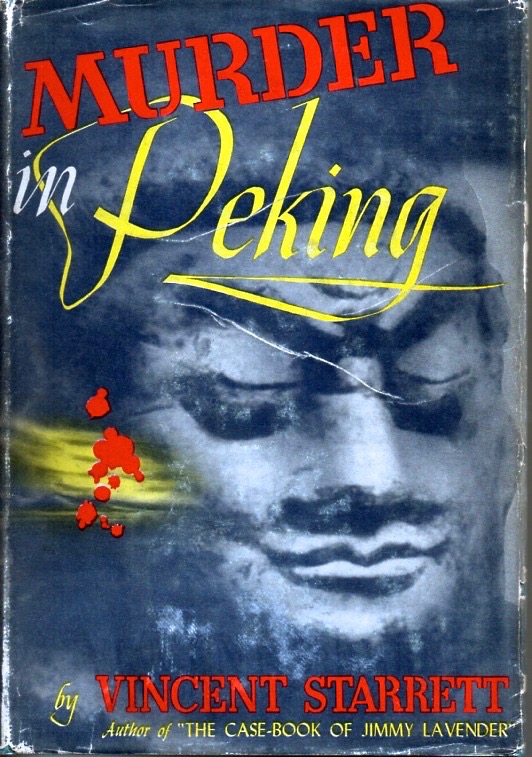
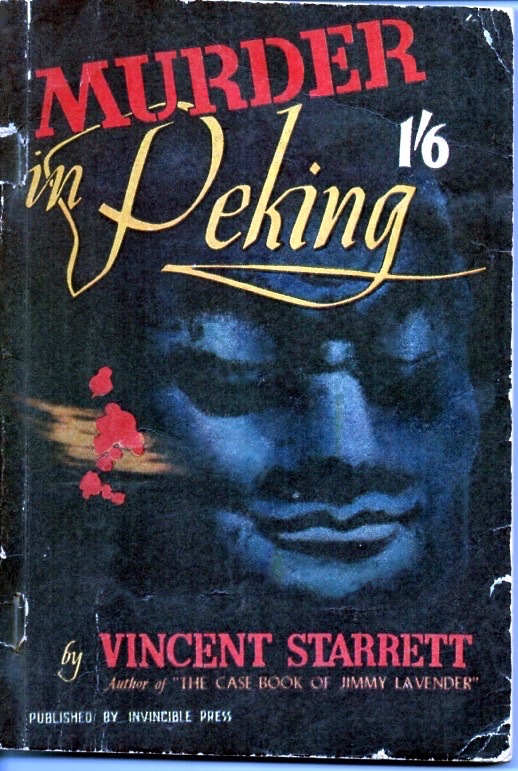
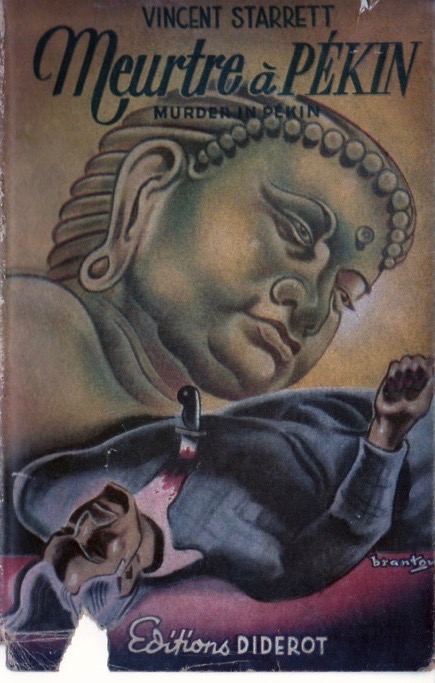
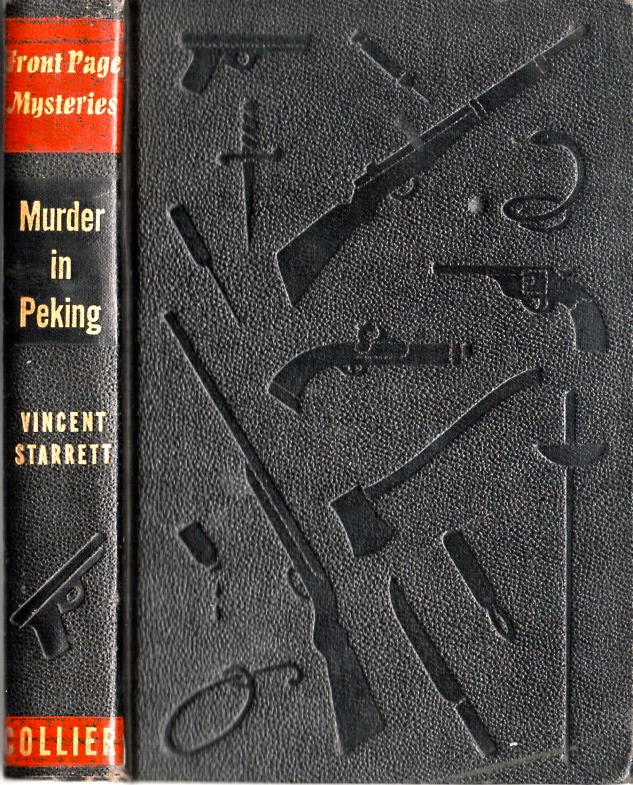
The book was largely forgotten until it was reprinted as Murder in Peking in 1946—nearly a decade later—by the Lantern Press Inc. of New York. That same year, P.F. Collier reprinted it as part of a set of its “Front Page Mysteries” series. World War II, with the Asiatic-Pacific Theater creating an interest in all things Asian, must have revived interest in the old chestnut.
This version not only had a new title, but was true to Starrett’s original manuscript, which must have pleased him.
I don’t know how much money Starrett got for it, but the book became a belated hit of international proportions. Except for The Private Life of Sherlock Holmes, no other Starrett book had such a wide circulation.
Walter Edwards of London produced a hard cover British edition in 1947.
The book became the only time a Starrett mystery novel was published in Australia, as a mass market paperback in 1946 by the Invincible Press.
That same year, Editions Diderot in Paris published Meurtre a Pekin, translated into French by Valentine Isabel Johnston and featuring a lurid dust jacket that cries out, “roman policier”!
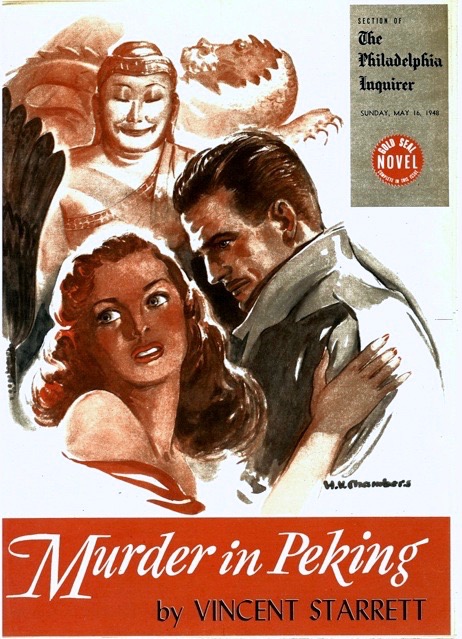
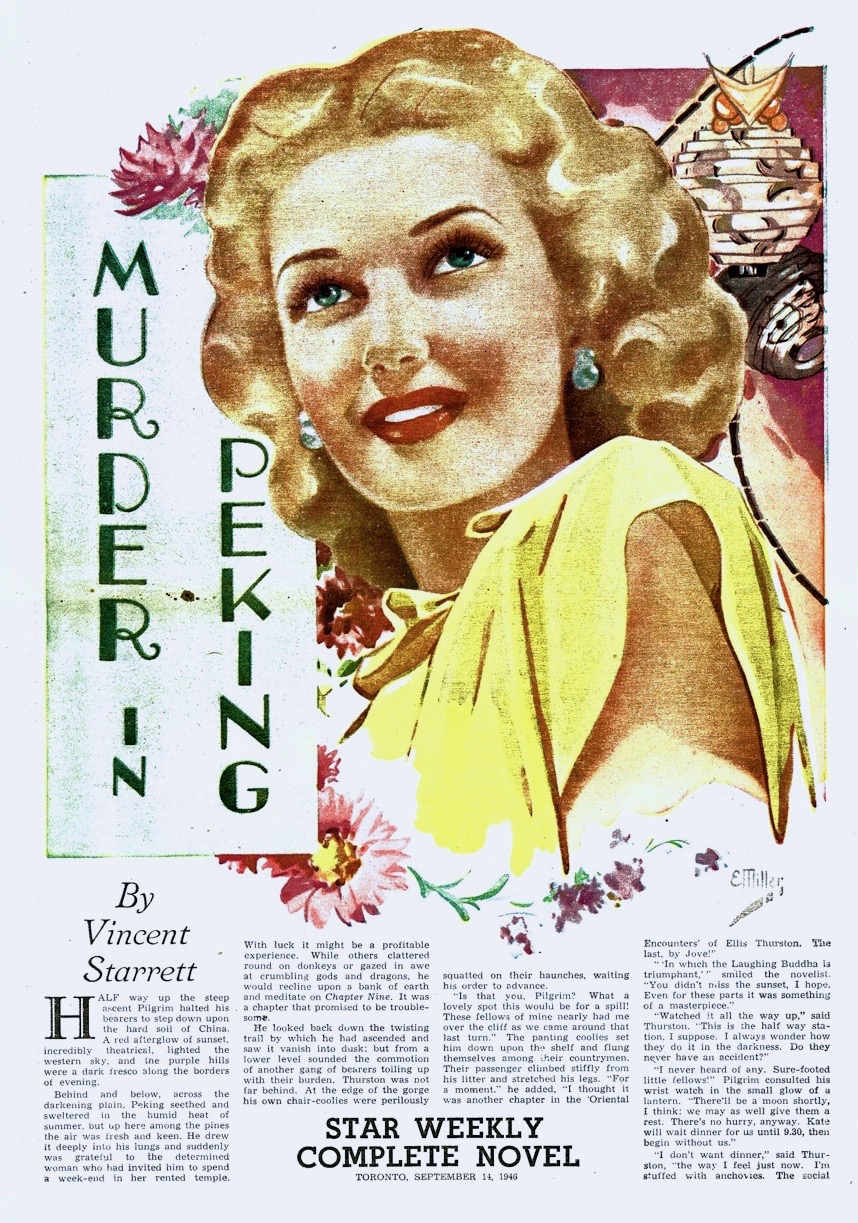
There was one more incarnation for the story.
Murder in Peking was published in at least two newspapers as a Sunday supplement. (I suspect it was syndicated for publication in many others, but I’ve not been able to find those papers.)
Syndicating novels was a common practice in the post-war period, when newspapers were competing for the attention of readers fascinated by the growing television glow. I’ve seen stories by Rex Stout, Agatha Christie and many others turn up in this way.
Murder in Peking was once again edited, and it’s likely Starrett had little say over how it was done. Chances are, he signed away his rights and an editor with the newspaper syndicate cut the story so it could fit in a large supplement of eight or so pages.
Here is how it was seen in two newspapers: The Philadelphia Inquirer for May 16, 1948 and The Toronto Star for Sept. 11, 1946. Publication in the Star was like coming home, since Toronto was the place of his birth and still home to distant relatives.
The miniature edition of Oriental Encounters, published in 1975. The booklet first was produced in a larger version in 1938.
The next product of his China excursion had a considerably humbler history, but, like Laughing Buddha/Murder in Peking, it also had a belated second life.
When he got back to the States, Starrett spun a few of his experiences into feature stories he tried to sell to various publications. Two stories seemed to him to be of interest: “New Movements in Old China,” is the cheeky title he gave to “perhaps the only authoritative account in print of China’s night soil collectors.”
The 1938 original of Oriental Encounters and its 1975 little brother
The second story, “The Passing of the Eunuch,” is a long and sympathetic account of the lives of the remaining community of eunuchs, those elderly men whose predecessors once held positions of authority and respect but by the 1930s were only seeking to live out the remainder of their lives in quiet anonymity.
Starrett’s normally strong sense of what would grab the reader’s interest failed him in both cases. The routines of Peking’s “honey cart” drivers was deemed too tasteless, while a story that dealt with men who were neutered found no takers. As a result, neither sold and they wound up being (self?) published together as Oriental Encounters: Two Essays in Bad Taste by Normandie House of Chicago in 1938 in a limited edition of 249 copies. As Starrett describes, this was a “slender volume in bright firecracker red covers lettered with Chinese characters in gold.”
Oriental Encounters also has the best dedication in any Starrett book, which is transcribed here in full:
TO THE THIRTY-ONE EDITORS
who enjoyed one or both of these papers
in manuscript, but regretted their inability
to accept them for publication, this small
volume is cheerily dedicated.
That’s as close to a raised middle finger ever given by Starrett in print.
The book was a cherished collector's item for Starrett's friends, but little remembered elsewhere. Then in 1975, a miniature version of Oriental Encounters was published by The Black Cat Press in Skokie, Illinois. It came 37 years after the first edition and one year following Starrett’s death.
There is a more detailed description of these two stories and their publication history in an earlier post.
There is at least one more item that came from his time in China: An essay on the history of Chinese detective stories. The product of his months of searching the ancient city’s booksellers with Miss Yi Ying as his translator, “Some Chinese Detective Stories” was one of the first in the West to describe the exploits of old Judge Pao, Judge Di and others.
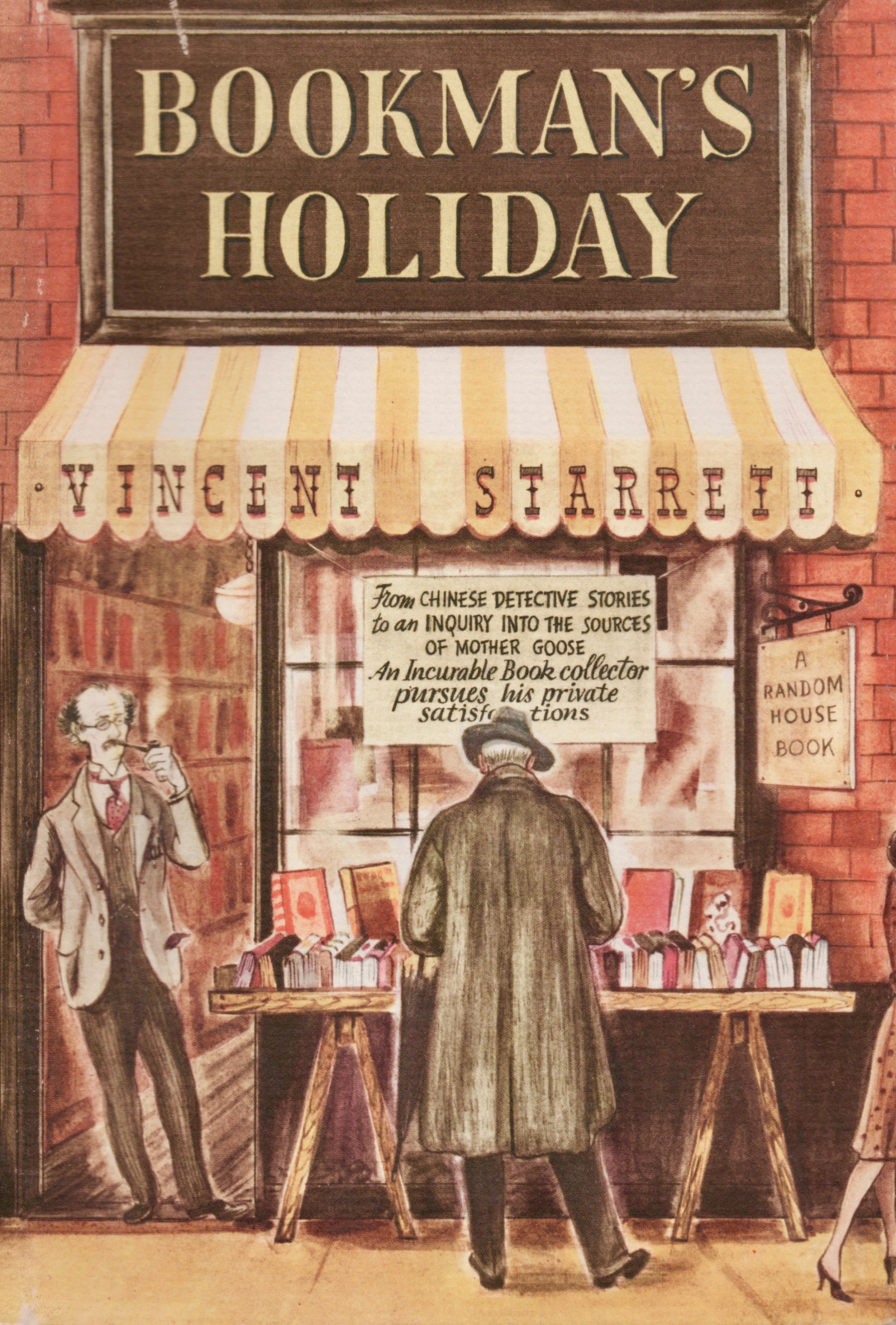
“In the popular literature of China, a detective story — so to call it — is simply a horror or mystery story plus a righteous magistrate with a talent for investigation.” Starrett laid out the types of mysteries and, perhaps naturally, draws parallels between the revered judges of Chinese lore and a certain Baker Street detective who is equally revered.
“There you may meet old Pao Kung (pronounced Bow-Goong), the Sherlock Holmes of China, who flourished in the ninth century; Di Jen-djeh (pronounced Dee-Ren-Jee), the mighty minister of state in the reign of Empress Wu T’se T’ien, and other famous justice-doers of old China.”
While he was among the first to draw these parallels, he was far from the last. Indeed, the modern stories involving Judge Dee have developed a following all of their own.
Starrett’s essay on these Chinese detectives had the place of honor as the opening for his 1942 compilation, Bookman’s Holiday, published by Macmillan. The essay continues to be cited to this day for its value in opening up the world of Chinese detectives to a wider audience.
And that’s where we will leave it for now, with one more image, of an elderly Starrett promoting The Last Bookman, edited by Peter Ruber.
That dressing gown Starrett is wearing looks much like one he would have worn years earlier in Asia. Like Holmes’ old dressing gown, it might have faded over the years, but it was a stalwart companion.

